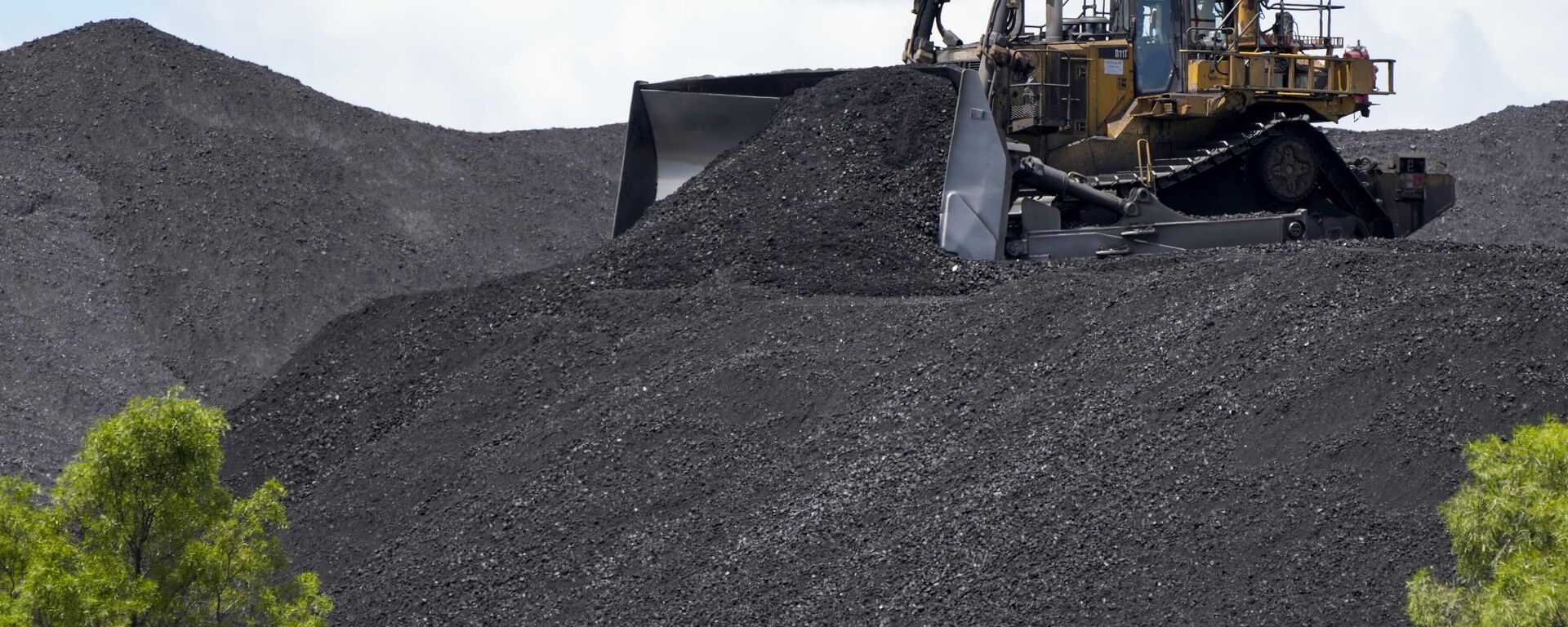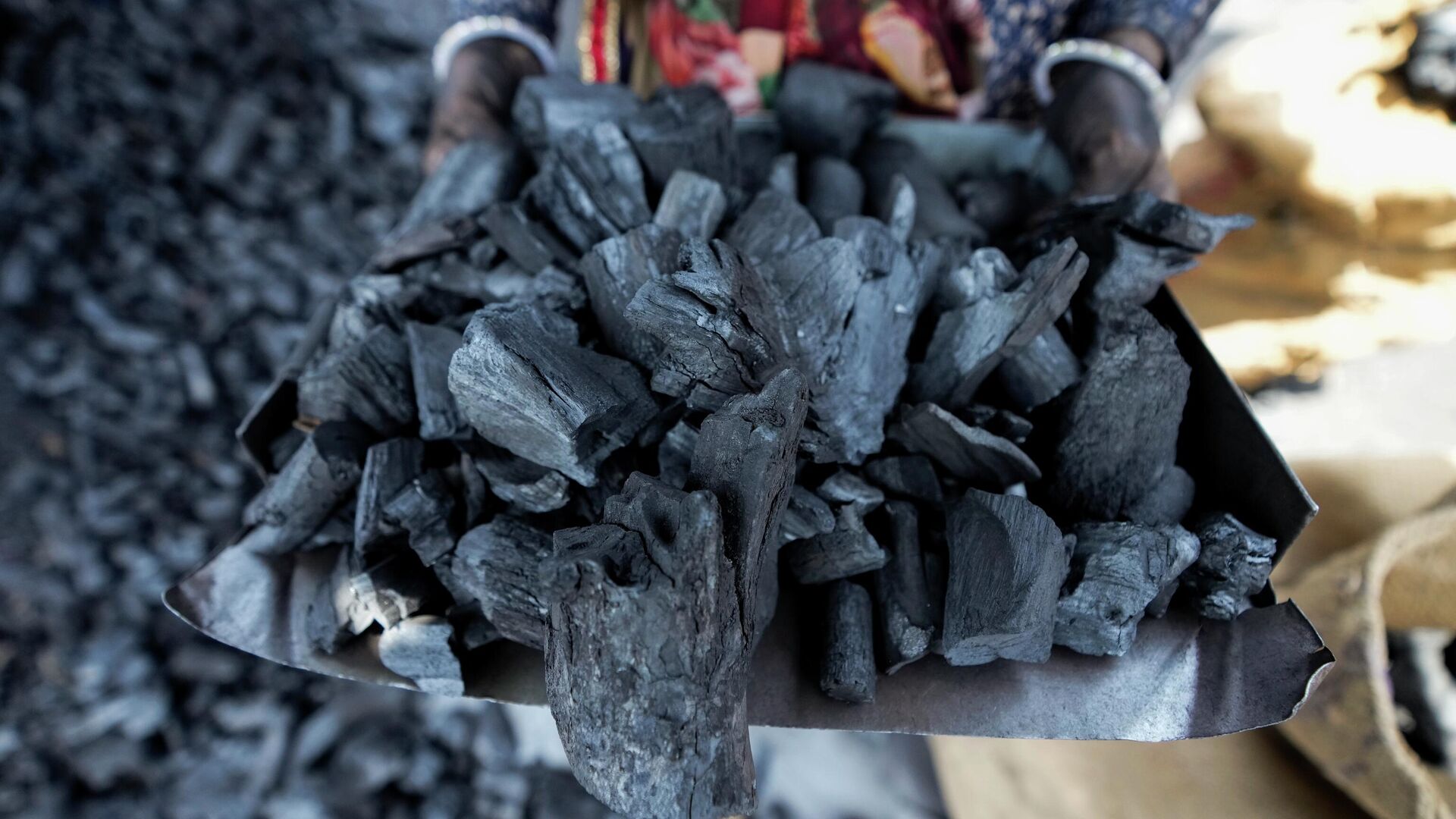https://sputnikglobe.com/20231216/global-coal-demand-soars-to-record-85-billion-tons-in-2023-amid-energy-crisis-1115628327.html
Global Coal Demand Soars to Record 8.5 Billion Tons in 2023 Amid Energy Crisis
Global Coal Demand Soars to Record 8.5 Billion Tons in 2023 Amid Energy Crisis
Sputnik International
Despite advocating green energy, the West saw a 14 percent surge in coal use in 2021 — mainly for power generation. Sanctions on Russia and global market disruptions have also increased dependence on coal, especially in the EU.
2023-12-16T16:36+0000
2023-12-16T16:36+0000
2023-12-16T16:36+0000
world
europe
russia
china
germany
european union (eu)
international energy agency (iea)
nord stream
https://cdn1.img.sputnikglobe.com/img/07e6/0b/07/1103846272_0:160:3073:1888_1920x0_80_0_0_7d462074de657264ae1b31572aa49f0f.jpg
Global coal demand is expected to hit an all-time high by the end of 2023 — surpassing 8.5 billion tons.The International Energy Agency (IEA) reported a 1.4-percent increase in demand in its Coal 2023 report, primarily attributed to growing consumption in emerging and developing economies, marking a pivotal moment in the world's energy landscape.Despite Western countries' warnings about climate change, their reliance on coal remains significant. Coal accounts for a considerable portion of their energy mix even as they advocate for green energy solutions.Rising gas prices in 2021 made coal-fired power generation competitive again despite higher European Union Allowance (EUA) prices for carbon emissions. Coal consumption in the EU surged 14 percent that year, mainly in the power sector, according to IEA's Coal 2022 analysis and forecast for 2025.Western sanctions on Russia in 2022 and the ensuing attacks on the Nord Stream pipeline further upset global fuel markets, leading European countries to seek alternatives to Russian gas supplies.Several EU countries, including Germany, Finland, France, the Netherlands, Spain, Italy, Denmark, Greece, the Czech Republic, Hungary and Austria, have extended the lifetimes of their coal-fired power plants, reopened closed plants or lifted caps on generation. That reveals a deep rift between climate change rhetoric and actual energy policies in these countries, says the IEA’s projection for 2025.The West's quest to find alternatives to Russian oil and gas has significantly increased coal usage, highlighting the challenges in balancing energy security, economic needs and environmental commitments.In a landmark development this year, China, India, and Indonesia — the trio dominating global coal production and accounting for 70 percent of the world's supply — are poised to collectively push output beyond 2.5 billion tons, setting a historic record in fossil fuel production. This surge would fuel a new high in the global coal trade, primarily propelled by robust growth in Asian markets.From 2023 onwards, however, a shift is expected. The IEA predicts a decline in coal usage, especially in advanced economies, as renewable energy capacity expands. This reduction is expected to be particularly notable in China, which accounts for more than half of global coal demand. The IEA forecasts a 2.3 percent decrease in global coal demand by 2026 compared to 2023.
https://sputnikglobe.com/20221211/australias-energy-minister-defends-cap-on-countrys-coal--gas-prices-amid-energy-crisis-1105341156.html
russia
china
germany
Sputnik International
feedback@sputniknews.com
+74956456601
MIA „Rossiya Segodnya“
2023
Chimauchem Nwosu
https://cdn1.img.sputnikglobe.com/img/07e7/09/01/1113046371_0:99:1536:1635_100x100_80_0_0_9c5c627283eca931c39fe4852bbb301c.jpg
Chimauchem Nwosu
https://cdn1.img.sputnikglobe.com/img/07e7/09/01/1113046371_0:99:1536:1635_100x100_80_0_0_9c5c627283eca931c39fe4852bbb301c.jpg
News
en_EN
Sputnik International
feedback@sputniknews.com
+74956456601
MIA „Rossiya Segodnya“
Sputnik International
feedback@sputniknews.com
+74956456601
MIA „Rossiya Segodnya“
Chimauchem Nwosu
https://cdn1.img.sputnikglobe.com/img/07e7/09/01/1113046371_0:99:1536:1635_100x100_80_0_0_9c5c627283eca931c39fe4852bbb301c.jpg
international energy agency, iea, coal 2023 report, global coal demand, emerging economies, developing economies, energy landscape, climate change, green energy, coal consumption, european union, eua prices, carbon emissions, gas markets, coal-fired power generation, western sanctions, russia, nord stream pipeline, energy security, economic needs, environmental commitments, china, india, indonesia, fossil fuel production, global coal trade, renewable energy, advanced economies.
international energy agency, iea, coal 2023 report, global coal demand, emerging economies, developing economies, energy landscape, climate change, green energy, coal consumption, european union, eua prices, carbon emissions, gas markets, coal-fired power generation, western sanctions, russia, nord stream pipeline, energy security, economic needs, environmental commitments, china, india, indonesia, fossil fuel production, global coal trade, renewable energy, advanced economies.
Global Coal Demand Soars to Record 8.5 Billion Tons in 2023 Amid Energy Crisis
Despite advocating for green energy, Western countries saw a 14 percent surge in coal use in 2021 — mainly for power generation. Sanctions on Russia and global market disruptions have also increased dependence on coal, especially in the EU.
Global coal demand is expected to hit an all-time high by the end of 2023 — surpassing 8.5 billion tons.
The International Energy Agency (IEA) reported a 1.4-percent increase in demand in its
Coal 2023 report, primarily attributed to growing consumption in emerging and developing economies, marking a pivotal moment in the world's energy landscape.
Despite Western countries' warnings about climate change, their
reliance on coal remains significant. Coal accounts for a considerable portion of their energy mix even as they advocate for green energy solutions.
Rising gas prices in 2021 made coal-fired power generation competitive again despite higher European Union Allowance (EUA) prices for carbon emissions. C
oal consumption in the EU surged 14 percent that year, mainly in the power sector, according to IEA's Coal 2022 analysis and forecast for 2025.

11 December 2022, 08:35 GMT
Western sanctions on Russia in 2022 and the ensuing attacks on the Nord Stream pipeline further upset global fuel markets, leading European countries to seek alternatives to Russian gas supplies.
Several EU countries, including Germany, Finland, France, the Netherlands, Spain, Italy, Denmark, Greece, the Czech Republic, Hungary and Austria, have extended the lifetimes of their coal-fired power plants, reopened closed plants or lifted caps on generation. That reveals a deep rift between climate change rhetoric and actual energy policies in these countries, says the
IEA’s projection for 2025.
The West's quest to find alternatives to Russian oil and gas has significantly increased coal usage, highlighting the challenges in balancing energy security, economic needs and environmental commitments.
In a landmark development this year, China, India, and Indonesia — the trio dominating global coal production and accounting for 70 percent of the world's supply — are poised to collectively push output beyond 2.5 billion tons, setting a historic record in fossil fuel production. This surge would fuel a new high in the global coal trade, primarily propelled by robust growth in Asian markets.
From 2023 onwards, however, a shift is expected. The IEA predicts a decline in coal usage, especially in advanced economies, as renewable energy capacity expands. This reduction is expected to be particularly notable in China, which accounts for more than half of global coal demand. The IEA forecasts a 2.3 percent decrease in global coal demand by 2026 compared to 2023.




